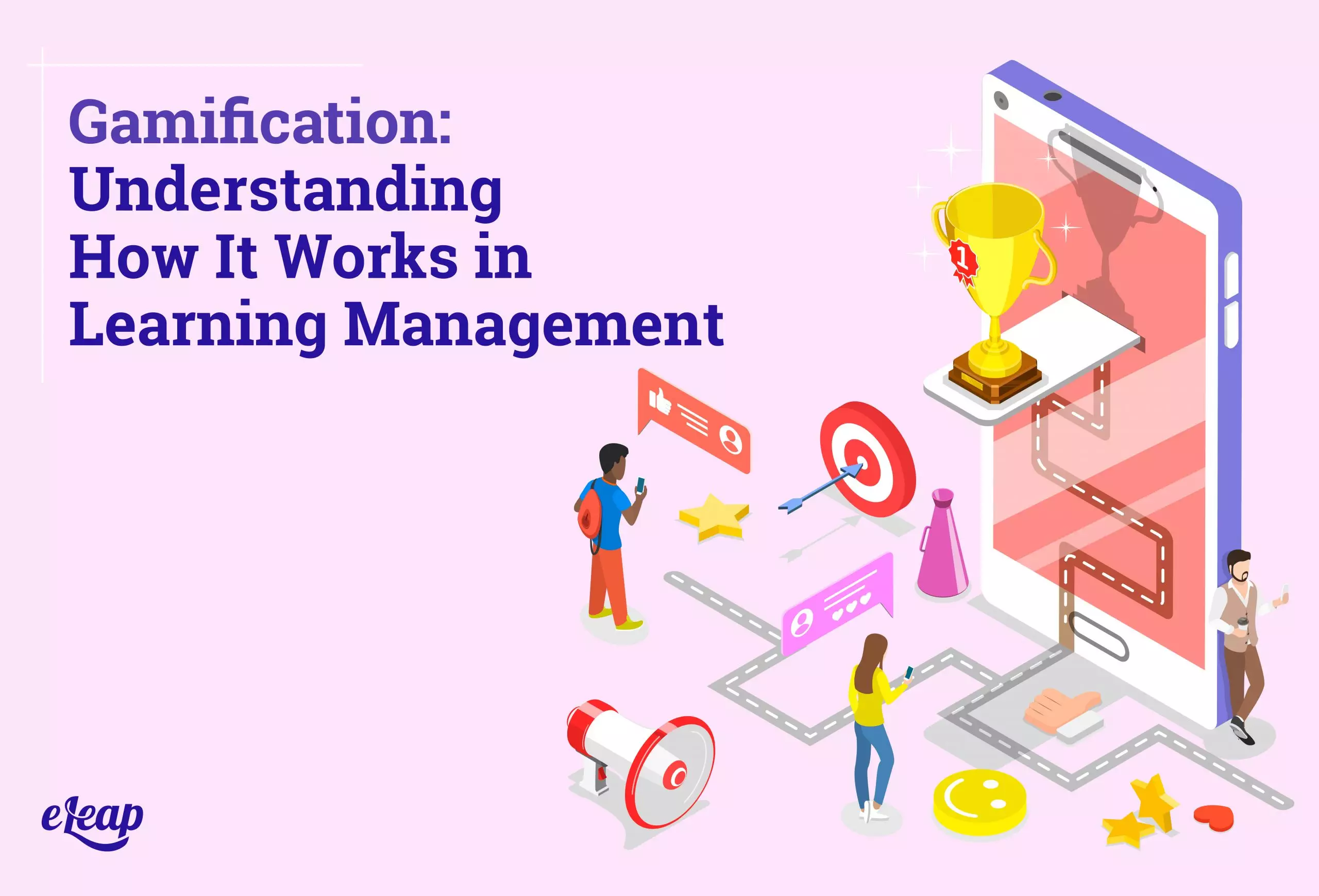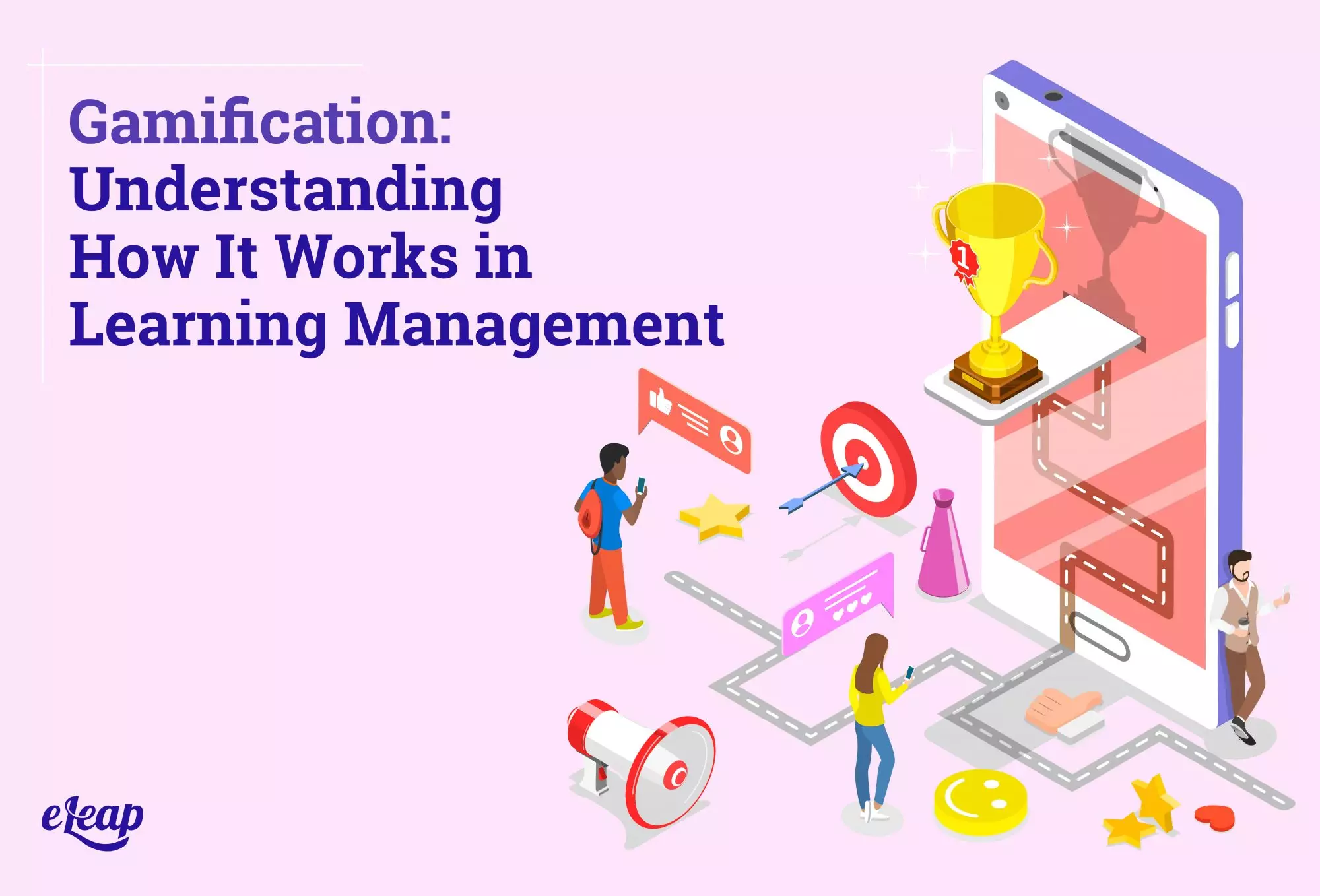Gamification: Understanding How It Works in Learning Management

Gamification – it’s one of the more pronounced trends in learning management today. However, it can be challenging to understand how it works, the benefits it offers, and even why you should ensure it’s present in your LMS. Below, we’ll take a headlong dive into gamification and how it works in learning management.

What Is Gamification?
Gamification is pretty much what the name says – turning learning into something more game-like. However, that’s a pretty blanket statement. What does it mean to turn learning content into a game?
Actually, it could be almost anything. For instance, most people report that they would be more engaged with an LMS if there was a points system. In this instance, you could assign points based on quiz score, unit completion, and any number of other metrics. The point is to have a score so that employees have a sense of accomplishment or even so-called bragging rights. Instituting a leaderboard can create a sense of urgency that leads to healthy competition, too.
However, gamification can go much, much deeper than handing out scores and creating leaderboards. It’s all about adding in the necessary game mechanics, proactive directives, and game dynamics to engage your learners.
Game Dynamics and Mechanics
Every game has rules that apply. These are game mechanics. You can do X, but not Y, for instance. Think about your favorite sport (another game) and you’ll quickly see what we mean. Rules provide structure around which the content is built, but also through which the player (learner) must navigate. They need to play by the rules to win. However, this term also applies to the rewards that you offer players for taking an action or making progress toward a specific outcome. To break down mechanics, we find some familiar terms, such as:
- Badges
- Trackable progress towards a goal or completion
- Points
- Timed decision-making
- Storyboarding
- Scripts
- Levels
- Feedback on progress/performance
Game dynamics are related to mechanics, but they are not the same. Instead, these are the emotions, desires, and behaviors built into the mechanics. For instance:
- Leaderboards create a desire to compete for the top spot.
- Completing team missions builds confidence, but also a sense of collaboration and teamwork. Seeing the accomplishments of others helps everyone build a sense of community.
- Unlocking bonuses, new levels, secret missions, and the like can surprise learners and even excite and delight them.
- Having access to a profile and personal dashboard helps create a deeper sense of engagement and also builds a sense of ownership and personal responsibility within learners.
An Example
Let’s consider an example of how gamification might work. We’ll use the onboarding process for a corporation. John A is a new hire. He has to go through several computer-based assessments, HR information, and more. Most of these require nothing more than reading, followed by multiple-choice questions to ensure that John was paying attention.
Without gamification, John is unstimulated. After 20 minutes, his attention begins to wander. After 30 minutes, he’s getting sleepy. Within 45 minutes, he’s completely disengaged from the training session, but he must still complete it. Now, he might be able to guess at the answers of the multiple-choice segment and “pass”, but does that do any good if he didn’t learn the material he was supposed to?
What if, instead of page after page of text, John was provided with an animated simulation for some segments. An animated character could interact with an imaginary world, acting out situations that correspond to whatever was being taught in the lesson. For instance, a module on workplace safety could involve John (via the game character) identifying unsafe situations in a fictitious tableau. For each correct answer, John would earn points, which would be displayed in his dashboard and/or added up overtime to his overall score, which could be shown on a leaderboard.
Why Consider Gamification?
So, why should you consider the significant investment of time and money needed to revamp your current LMS or find one that supports gamification? There are quite a few benefits that gamification can provide.
Engagement – This is the big one, the primary reason that so many learners prefer gamified content and so many companies are shifting toward it. Gamification helps ensure better learner engagement. They’re more mentally focused, more attuned to what’s going on, and more receptive to what is being taught. Engaged learners retain information better and for longer periods.
Enjoyment – Gamification is also fun. And, let’s face it, most of us have sat through boring, dry training that made us want to do nothing more than take a long nap. Because it’s more enjoyable, there’s less friction in getting employees to complete their training, and they complete units faster and more accurately.
Bonding – Depending on the gamification process, it can also help employees develop stronger bonds with one another. For instance, games that must be played as a team can help learners build trust and feel closer to one another. Games where one employee must lead another can be the prelude to mentorship programs.
Digital Answer Storage – With some gamified LMSs, you can benefit from message boards and forums. The information in those posts can be made searchable, creating a knowledge base for other employees and streamlining the process of getting answers to pressing questions.
In Conclusion
Gamification offers some pretty potent benefits. You can engage learners on a deeper level. You can transform dull, boring material into something that learners look forward to. At the end of the day, though, the real benefit is that your learners retain the information being taught, and do so for a longer period. Ultimately, that helps you build a stronger organization overall.